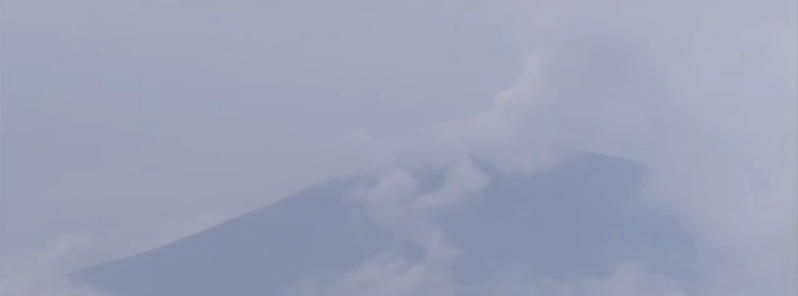Japan’s Asamayama volcano erupts, alert level remains at 2 of 5

A small-scale eruption took place around 00:20 UTC on June 16 (09:20 JST) at Asamayama volcano located 140 km NW of capital Tokyo, Japan. Alert level remains at 2 since Thursday, June 11, as well as a 2-km exclusion zone around the crater.
The Japan Meteorological Agency (JMA) said light ashfall was observed 4 km N of the volcano, as per civil reports received today. The agency warned people nearby that current activity could continue and may grow in intensity. "The eruption could be a precursor to more violent activity, and volcano could hurl rocks into the sky."
JMA officials say it is difficult to make precise observations as the area around the peak is covered in thick cloud.
"A relatively large volcanic tremors were recorded by seismometers today," Tokyo Earthquake Research Institute professor Setsuya Nakada said for NHK and added "the tremors were likely accompanied by an eruption."
"Officials recorded nearly 90 tremors on June 7, and four days later (June 11), they estimate about 1 700 tons of sulfur dioxide was released – 20 times more compared with surveys from a month earlier."
According to the Volcano Discovery, JMA scientists think that today's explosion will likely be followed by similar ones in the near future, but not lead to a larger scale eruption. "There are no clear signs (such as deformation) of a major body of fresh magma is rising under the volcano. In that case, a possible scenario is that the eruption this morning is mostly phreatic in origin, i.e. driven by overheated ground water with no or little involvement of new magma."
As reported on June 11, seismic activity under the volcano has significantly increased since April 2015 with strong and steady increase of gas emissions.
Asamayama, also known as Mount Asama, is Honshu's most active volcano. It last erupted in 2009 (Jan 21 – May 2, VEI 2) after which the seismicity quieted down. It again started showing weak upward trend in early 2014 and increased to over 80 shallow daily earthquakes (2 – 3 km) by April 2015, the highest number since the 2009 eruption.
A large-scale eruption in 1783 resulted in more than 1 000 deaths and the destruction of many homes. There were 398 eruptions in 1941 and 287 eruptions in 1954.
See NHK's video report [english version] on today's activity at Asamayama here.
Geologic summary
Asamayama, Honshu's most active volcano, overlooks the resort town of Karuizawa, 140 km NW of Tokyo. The volcano is located at the junction of the Izu-Marianas and NE Japan volcanic arcs. The modern Maekake cone forms the summit and is situated east of the horseshoe-shaped remnant of an older andesitic volcano, Kurofuyama, which was destroyed by a late-Pleistocene landslide about 20,000 years before present (BP).
Growth of a dacitic shield volcano was accompanied by pumiceous pyroclastic flows, the largest of which occurred about 14,000-11,000 BP, and by growth of the Ko-Asama-yama lava dome on the east flank. Maekake, capped by the Kamayama pyroclastic cone that forms the present summit, is probably only a few thousand years old and has an historical record dating back at least to the 11th century CE. Maekake has had several major plinian eruptions, the last two of which occurred in 1108 (Asamayama's largest Holocene eruption) and 1783 CE. (GVP)
Featured image: Asamayama on June 16, 2016. Credit: NHK.

Commenting rules and guidelines
We value the thoughts and opinions of our readers and welcome healthy discussions on our website. In order to maintain a respectful and positive community, we ask that all commenters follow these rules:
We reserve the right to remove any comments that violate these rules. By commenting on our website, you agree to abide by these guidelines. Thank you for helping to create a positive and welcoming environment for all.